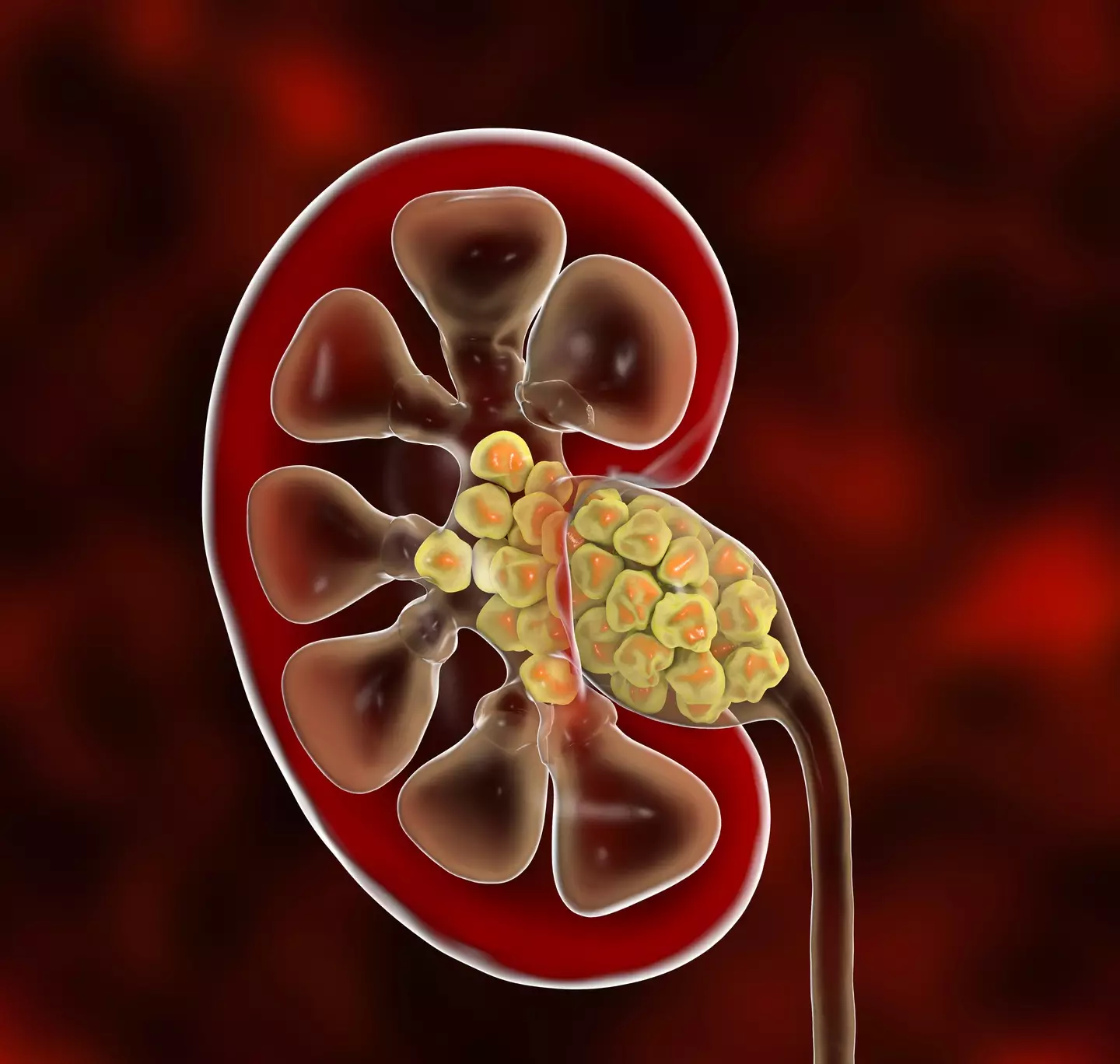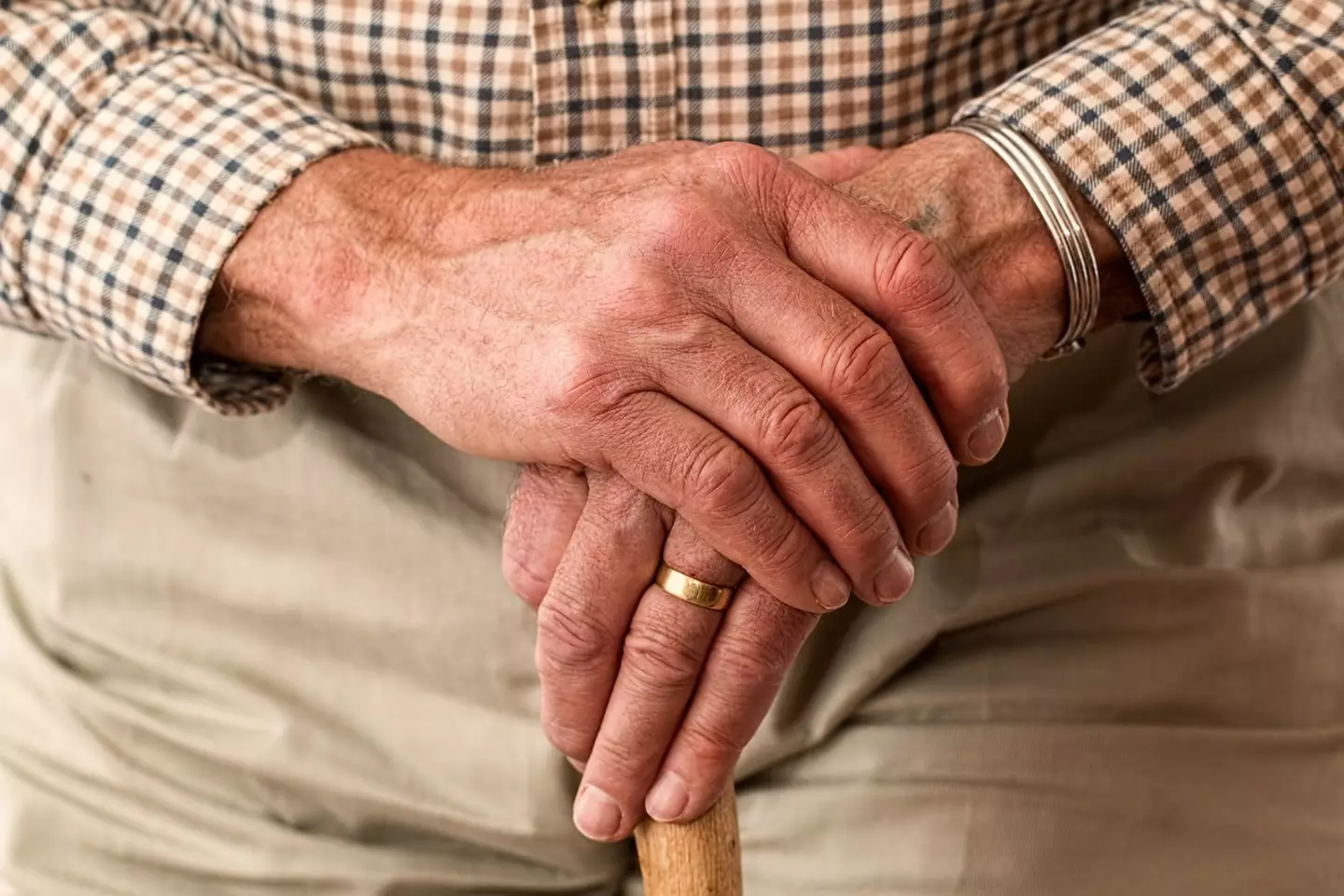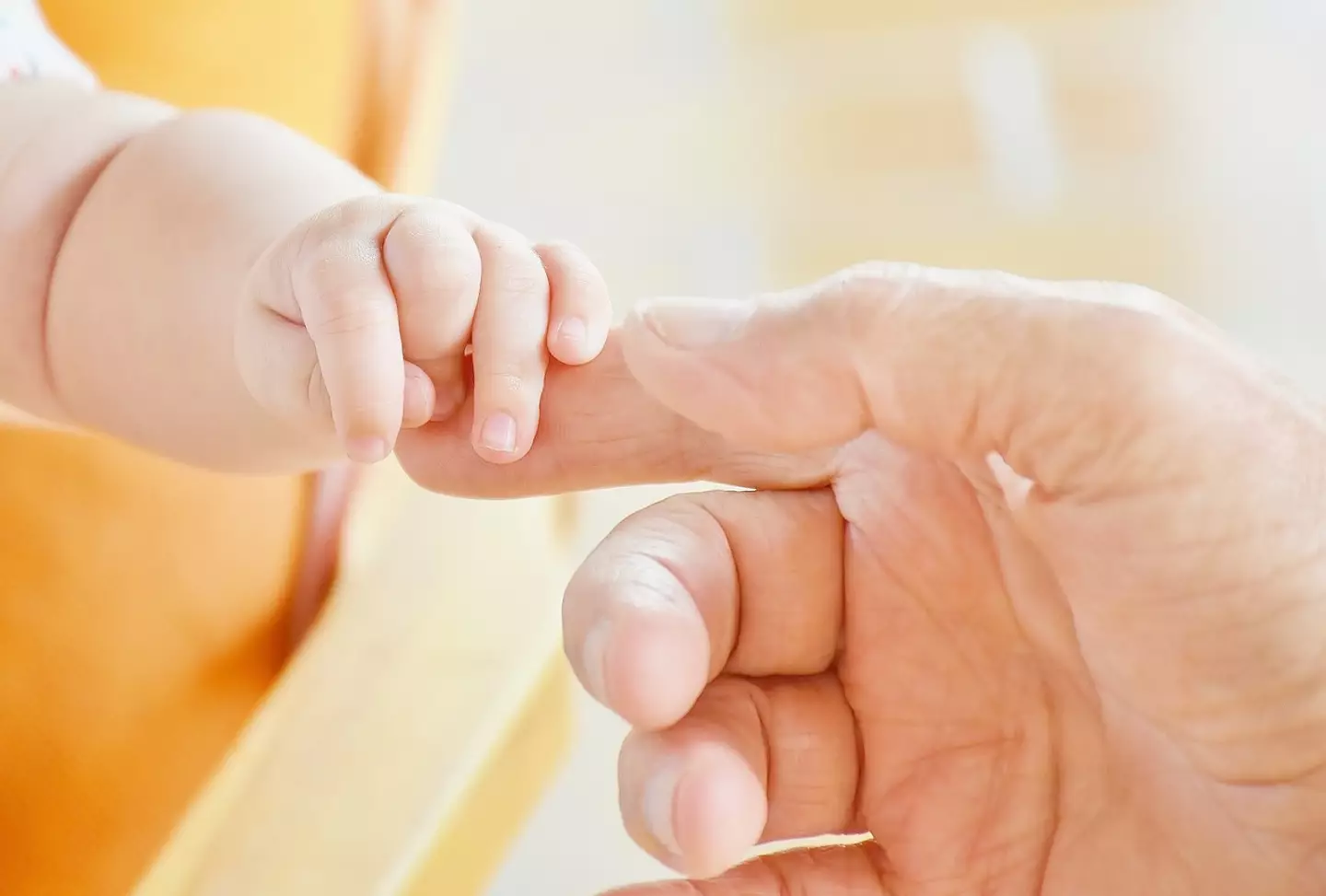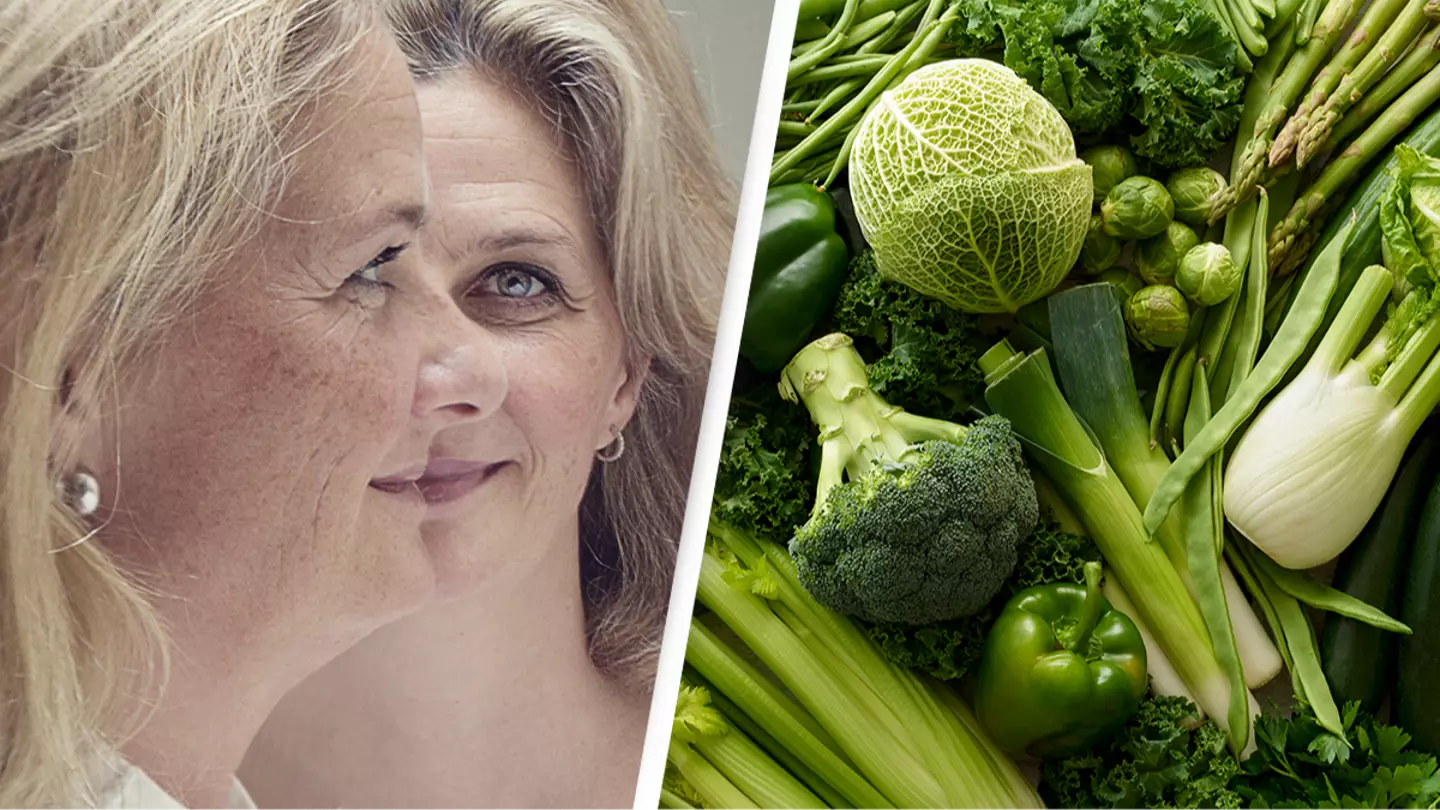Many have often wondered the most painful thing a human can experience – is it a kick to the groin for men, childbirth for women?
Well, we’ve finally got the answers to settle the debate of what is the most painful natural thing you can experience… and I’m not sure if there’s a winner.
Apparently, there are moms out there who have birthed several children that will state the pain experienced in one particular instance is much worse, just as there are men who agree that this condition hurts way more than a simple kick in the nuts. That condition is kidney stones.
People who have experienced both will tell you just how much worse kidney stones are than giving birth, or being kicked in the balls – a study even touched on the subject and sided with kidney stones.

Kidney stones are the worst natural pain a human can experience (Getty stock)
Authors of the study, Saiful Miah, Charlotte Gunner, Lucy Clayton, Suresh Venugopal, Nigel R Boucher, and Bo Parys wrote: “Thirty-six male and 23 female patients fully completed the questionnaire with age, stone size, and numerical pain rating score recorded.
“There were no statistically significant differences in these parameters between male and female patients.
“From the male cohort of patients, 88.9% stated that it was the worst pain they had ever experienced and for the female cohort this was 78.2%.”
So, that’s pretty definitive.

The last thing you want to do is spend hours in the ER in agonizing pain with kidney stones (Getty stock)
But let’s hear from the medical professionals (not that the authors of the study aren’t).
Professor Troy Madsen, who specializes in emergency medicine and surgery at the University of Utah, dove into the subject himself in 2022 while appearing as a guest on the Who Cares About Men’s Health? podcast.
“I don’t know that I ever see anyone on a regular basis in the ER who has more pain than a person who’s there with a kidney stone,” he explained.
“You can tell,” he added. “You walk in the room, they’re writhing […] It’s just incredible pain.”
Meanwhile, a blog created by doctors at Cedars-Sinai, a medical center in Los Angeles, read: “Passing a kidney stone is said to be some of the most severe physical pain a person can experience.”
If you do think you suffer from a kidney stone, the Mayo Clinic recommends to try drinking water, taking pain relievers, or medical therapy recommended by a professional to try and pass it.
If the stone is larger and causing a lot of discomfort, it is not unusual to get surgery to get it removed.
Conversation9 Comments
Featured Image Credit: Getty stock

If you’re worried about the speed with which you’re approaching your next ‘big’ birthday, then I’ve got some good news for you.
Sure, turning 25, 30 or 40 might seem scary, but it turns out that scientists have been able to work out the maximum age a human can live to, and I can almost guarantee you’ve got a good few years left.
The findings come from a study conducted by statisticians at Tilburg and Rotterdam’s Erasmus universities, who looked at the age at which 75,000 people in the Netherlands died in the 30 years up to 2017.
Interestingly, they didn’t focus on life expectancy to come up with their findings. Instead, the researchers wanted to question how long a single individual could live as long as they looked after themselves, and if their life wasn’t cut short by an illness or other circumstance.
By taking into account how old the people in the study were when they died, the researchers determined that a person’s maximum lifespan plateaus in their nineties – but that doesn’t mean it’s going to end.

Pixabay
The researchers suggested it is unlikely for a human to live beyond 115, but found that women have a slightly longer lifespan than men.
While maximum lifespan for a female topped out at 115.7 years, men were estimated to reach a maximum age of 114.1 years.
Commenting on the findings, Professor John Einmahl, one of three scientists conducting the study, told AFP: “On average, people live longer, but the very oldest among us have not gotten older over the last thirty years.
“There is certainly some kind of a wall here. Of course the average life expectancy has increased. Nevertheless, the maximum ceiling itself hasn’t changed.”

Pixabay
In spite of the researchers’ findings, Einmahl admitted there are instances of people bending the norm and living beyond these suggested maximum lifespans.
The oldest man ever verified by the Guinness World Records was a Japanese man named Jiroemon Kimura, who lived to be 116 years old.
And early last year, French nun Sister André passed away at the grand old age of 118. Following her death, Guinness World Records named US-born Maria Branyas Morera the oldest living person in the world, at 115.
In 2019, Morera conducted an interview in which she attributed her longevity to ‘an orderly life that is socially very pleasant… a good life, without excesses’. Morera was born in San Francisco, California on 4 March, 1907, and moved to Catalonia in 1914.
Featured Image Credit: gorodenkoff/Getty / Portra Images/Getty

A small change to your diet could have positive benefits to your mental health, a study has found.
Twins are often used in this kind of research as they share 50 to 100 percent of their genetic background, making them ideal candidates for comparative studies.
For example, identical twins Ross and Hugo Turner went on separate meat and vegan diets to see how their bodies reacted over a 12-week period with some surprising results.
Now the results of a new study involving over 3,000 twins have been released.
The research looked at longitudinal associations between fruit and vegetable intakes and depressive symptoms in middle-aged and older adults specifically.
As of 2023, it was found that 29 percent of US adults had been diagnosed with depression at some point in their lives, GALLUP reported at the time.
This marked a 10 percent increase in comparison to 2015.
For the new twin study, participants all hailed from four countries: Australia, Denmark, Sweden and the US and also ranged from 45–90 years in age.

Twins are often used for scientific studies (Getty Stock Images)
Over an 11-year period, researchers at UNSW Sydney’s Centre for Healthy Brain Ageing (CHeBA) assessed the associations between fruit and vegetable intake and depressive symptoms in the study participants.
The landmark research went on to conclude that the twins that ate more fruit and vegetables had less depressive symptoms.
“The findings present another argument for increasing fruit and vegetable intake in adults over 45 years of age.” lead author and Post Doctoral Fellow Dr Annabel Matison said.
The study further explains: “Our meta-analyses of four observational studies in adults 45 + years found higher intakes of both fruit and vegetables were associated with lower risk of incident depression (15% and 9% respectively).
“There are, however, limitations to this evidence; for example, few studies to date have focused on older adults, and the associations detected may be due to residual confounding.”
In particular, the fruit and vegetable consumption was found to be low in the two Scandinavian studies, with Dr Matison adding: “The average for both being less than half the World Health Organisation recommended intake of at least 5 serves per day.
“We are unclear what the reduction in depression scores would be if intakes were increased to recommended levels.”

The study concluded that eating more fruit and vegetables can help with depression (Getty Stock Images)
While there may be some limitations to the study, twin studies are often raved about in the science community.
Discussing the benefits of twin research, co-author on the research and Leader of CHeBA’s Genomics and Epigenomics Group, Dr Karen Mather, said: “Twin pairs share 50-100% of their genetic background and when raised together share the same family environment.
“One of the advantages of the twin design is that it can help address the issue of unwanted factors, such as socioeconomic status early in life, influencing the results.”
Conversation1 Comment
Featured Image Credit: Getty Stock Images
Topics: Health, Mental Health, News, Science, Food and Drink

No one knows how long they’re going to live for, but scientists believe they’ve figured out the upper limits to how old humans can actually get.
I can practically hear biohacker Bryan Johnson, whose unusual approaches to health have ‘reversed’ his biological age, coming up with his plan to prove them wrong…
The figures were presented by statisticians at Tilburg and Rotterdam’s Erasmus universities, who determined the ‘maximum’ age humans can live to through a study of 75,000 deceased people.
The researchers looked at the age at which the subjects died in the 30 years up to 2017, with the hope of figuring out how long a single individual could live if they looked after themselves, and didn’t die due to an illness or some other circumstance.
Looking at the data, the researchers were able to determine that a person’s maximum lifespan plateaus in their nineties.
However, since many of us likely know someone who has made it to their 100th birthday or beyond, it’s clear that life doesn’t necessarily end there.

Research has found people can live into their 100s (Getty Stock Image)
Instead, the researchers suggested that the maximum age a human is likely to live to is 115.
Women also fare slightly better than men when it comes to longevity, as the research revealed that the maximum lifespan for a female tops out at 115.7 years, while men were estimated to reach a maximum age of 114.1 years.
Professor John Einmahl, one of three scientists conducting the study, discussed the revelation in an interview with AFP, saying: “On average, people live longer, but the very oldest among us have not gotten older over the last thirty years.
“There is certainly some kind of a wall here. Of course the average life expectancy has increased. Nevertheless, the maximum ceiling itself hasn’t changed.”

The oldest living person is 116 (Getty Stock Image)
While the research found that it is unlikely a human will live beyond 115, Einmahl admitted there are instances of people bending the norm and living beyond these suggested maximum lifespans.
The oldest man ever verified by the Guinness World Records (GWR) was a Japanese man named Jiroemon Kimura, who lived to be 116 years old.
And early last year, French nun Sister André passed away at the grand old age of 118.
In September 2024, Guinness World Records awarded Japan resident Tomiko Itooka as the current oldest living person.
Born in May 1908, Itooka is now more than 116 years old, and she received her official GWR certificate on the Respect for the Aged Day; a Japanese public holiday created to honor the country’s elderly citizens.
0 comments
Featured Image Credit: Peter Finch/Bevan Goldswain/Getty Images

Thankfully, COVID-19 isn’t as life-changing for most people as it seemed back in 2020, but there are still a lot of unanswered questions when it comes to the virus.
2020 was certainly a scary year for many people across the world as we dealt with the covid-19 pandemic, lockdowns and uncertainty.
However, scientists have continued to make headway in understanding the coronavirus, ultimately meaning countries around the world were able to produce vaccines to combat its impact and its spread.
With that being said, research into Covid still continues, and scientists involved in a recent study have found that in some patients, signs of the infection can still be found years after seemingly recovering.
While many across the world got Covid and quickly recovered or went symptomless, others faced a debilitating time dealing with long-covid.
A new study followed 24 Covid patients over a period of up to 900 days has revealed T cells may be a larger factor in the disease than previously thought.
T cells are a type of white blood cell that are part of the immune system and develop from stem cells in the bone marrow. They ultimately help protect the body from infection.
In June last month a separate study from Imperial College London hinted that targeted T cell therapies could be used to fight against long covid.
The team behind the study was set up in 2020 and has been following the behavior of T cells in the body after infection.

Finding out you had Covid could prove to be terrifying for some people. (Massimiliano Finzi / Getty)
Professor of Immunology at Imperial College London Danny Altmann, who was not involved in the study, explained that T cells were being found in high concentrations in certain location in the body after infection.
Speaking on the study he said: “[It] is a novel approach […] that allows them to map activated T cells in the body.
“They find patterns of long-term T cell activation that may help to explain patterns of Long Covid symptoms.
“For example, people with respiratory symptoms showed long-term homing of activated T cells to the lung.”

While many people were over Covid in a few days, long covid was debilitating to others. (SimpleImages / Getty)
Other scans showed activated T cells swarming to the gut wall, prompting the team to analyze gut biopsies. Again, they found the presence of COVID-19 RNA – a “long-term virus reservoir.”
While this is a step forward, according to the scientists, it is not exactly a slam dunk as it isn’t clear what the T cells are reacting to, whether they are responding to remnants of the infection or dealing with active particles.
Featured Image Credit: Getty Images/SimpleImages/Massimilano Finzi


